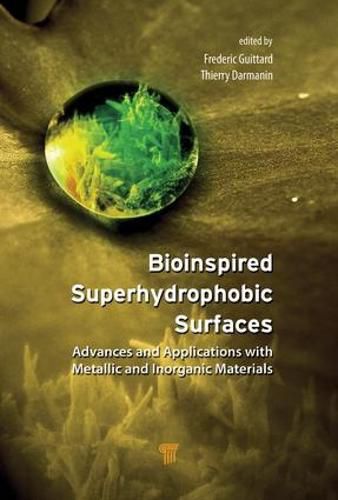Readings Newsletter
Become a Readings Member to make your shopping experience even easier.
Sign in or sign up for free!
You’re not far away from qualifying for FREE standard shipping within Australia
You’ve qualified for FREE standard shipping within Australia
The cart is loading…






Materials with superhydrophobic or related properties are one of the most studied subjects from a theoretical point of view and also for the large range of possible applications, for example, anticorrosion, antibacteria, optical devices, and sensors. The study of natural species with special wettability has shown us the importance of surface structures and the surface energy of the resulting surface properties. Various strategies can be used to reproduce superhydrophobic phenomena in the laboratory. General reviews on superhydrophobic properties already exist but, to our knowledge, do not focus on metallic and inorganic materials. Here, we focus especially on the strategies implemented for reaching superhydrophobic or related properties using metallic and inorganic materials. Indeed, these materials present unique properties, for example, thermal and mechanical resistance, chemical and ageing resistance, and optical (transparency, antireflection, photoluminescence) and electrical properties (conducting, semiconducting, insulating).
This book will be useful for graduate students of materials chemistry and physics and for researchers in surface science, nanostructures, and bioinspired or biomimetic materials.
$9.00 standard shipping within Australia
FREE standard shipping within Australia for orders over $100.00
Express & International shipping calculated at checkout
Materials with superhydrophobic or related properties are one of the most studied subjects from a theoretical point of view and also for the large range of possible applications, for example, anticorrosion, antibacteria, optical devices, and sensors. The study of natural species with special wettability has shown us the importance of surface structures and the surface energy of the resulting surface properties. Various strategies can be used to reproduce superhydrophobic phenomena in the laboratory. General reviews on superhydrophobic properties already exist but, to our knowledge, do not focus on metallic and inorganic materials. Here, we focus especially on the strategies implemented for reaching superhydrophobic or related properties using metallic and inorganic materials. Indeed, these materials present unique properties, for example, thermal and mechanical resistance, chemical and ageing resistance, and optical (transparency, antireflection, photoluminescence) and electrical properties (conducting, semiconducting, insulating).
This book will be useful for graduate students of materials chemistry and physics and for researchers in surface science, nanostructures, and bioinspired or biomimetic materials.